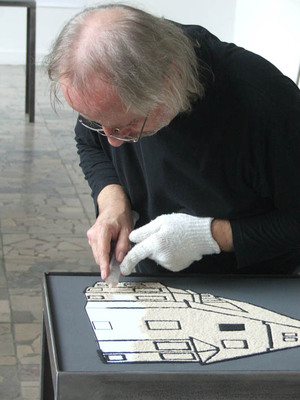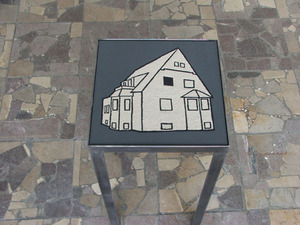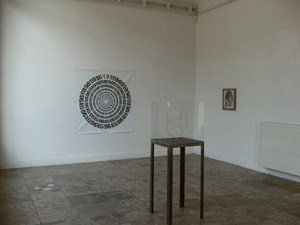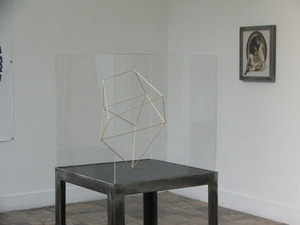-
-
-
-
-
-
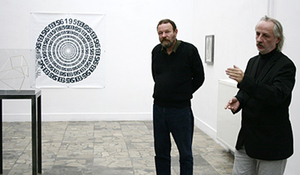
Ryszard Ługowski, Tomasz Wilmański
ONE MAN SHOWS
“With the eyes of my imagination, I can see a hypothetical picture of an elegant, first Lady of the house at Dürerweg, who is, tempted by an advertisement in a newspaper, comely and with faith, rubbing creme onto her face (not so young anymore), sitting by a tasteful dresser – in the exactly same spot, where many years later I saw the world for the first time ever.” (Tomasz Wilmański)
One of the threads, issues dealt with in the form of this exhibition, relates indirectly to the memory of a special place, a post-German house, over a hundred years old, in which the author of the presented works was brought into this world, and in which he had lived for many years. The fickle title of the exhibition relates to a product (face creme, to be exact) created by a German cosmetics company, Seifen-und Parfümeriefabrik J.G. Mouson und CO., established in 1798. The creme produced by the Mouson family was advertised as a miraculous antidote for ugly complexion and promised to diminish wrinkles which make your face look old. The process of cheating the passing time with the help of this mixture, was supposed to be the reason of people's happiness and wellbeing. The second, maybe even a more important source of inspiration when it comes to deciding on the title of the exhibition, was the author finding information about the existence of such a cosmetic mixture, during the redecoration works at a basement in his family house. Under the wallpaper, taken off of the one of the walls, there were German newspapers dating back to 1925, and inside them, i.a. a printed advertisement presenting the wonderful characteristics of the Creme Mouson. The two elements of reality, the house and the face creme mentioned above, the contexts of which meet here, became in this artistic statement a pretext for analytical settlements relating to the issue of personal experiencing of time. Overally speaking, the idea of the 'Creme Mouson' exhibition, with its whole personalizing relation, bases on the universal question about the ontological essence of the passing of time – memory and its elusiveness, of the inevitability of passing, with the parallel existential need of lasting.
Jeden z wątków podnoszonych w wystawie p.t. CREME MOUSON odnosi się pośrednio do pamięci o miejscu szczególnym - do poniemieckiego, ponad stuletniego domu, w którym autor przyszedł na świat i mieszkał przez wiele lat. Przewrotny tytuł pokazu CREME MOUSON jest podyktowany dwoma podstawowymi aspektami. Po pierwsze, nawiązuje do produktu (kremu) niemieckiej firmy Seifen- und Parfümeriefabrik J.G. Mouson und CO., powstałej w 1798 roku. Krem produkowany przez rodzinę Mouson był reklamowany jako cudowne antidotum na szpetną cerę i niwelowanie postarzających zmarszczek. Proces „oszukiwania” czasu za pomocą tej mikstury miał być dla ludzi powodem do szczęścia i dobrego samopoczucia. Po drugie, może bardziej istotne jest to, że informację o istnieniu takiego specyfiku kosmetycznego autor wystawy uzyskał podczas remontu piwnicy w domu rodzinnym. Pod zdjętą ze ściany tapetą znajdowały się gazety niemieckie z 1925 roku, a w nich między innymi wydrukowany anons o wspaniałych właściwościach Creme Mouson. Dwa elementy rzeczywistości - krem i dom, których konteksty się tu spotkały, stały się pretekstem w tej wypowiedzi artystycznej do analitycznych rozstrzygnięć związanych z problemem osobowego doświadczania czasu. Ogólnie mówiąc, idea pokazu p.t. CREME MOUSON, przy całym personalistycznym odniesieniu, zasadza się na pytaniu o ontologiczną istotę upływu czasu - pamięci i jej ulotności, o nieuchronność przemijania przy jednoczesnej egzystencjalnej konieczności trwania.
